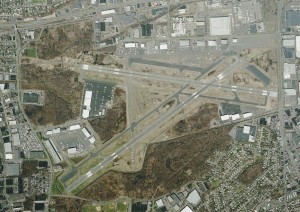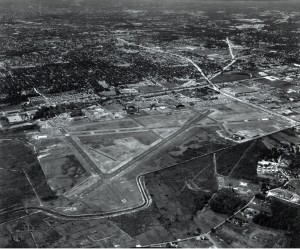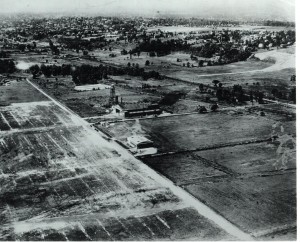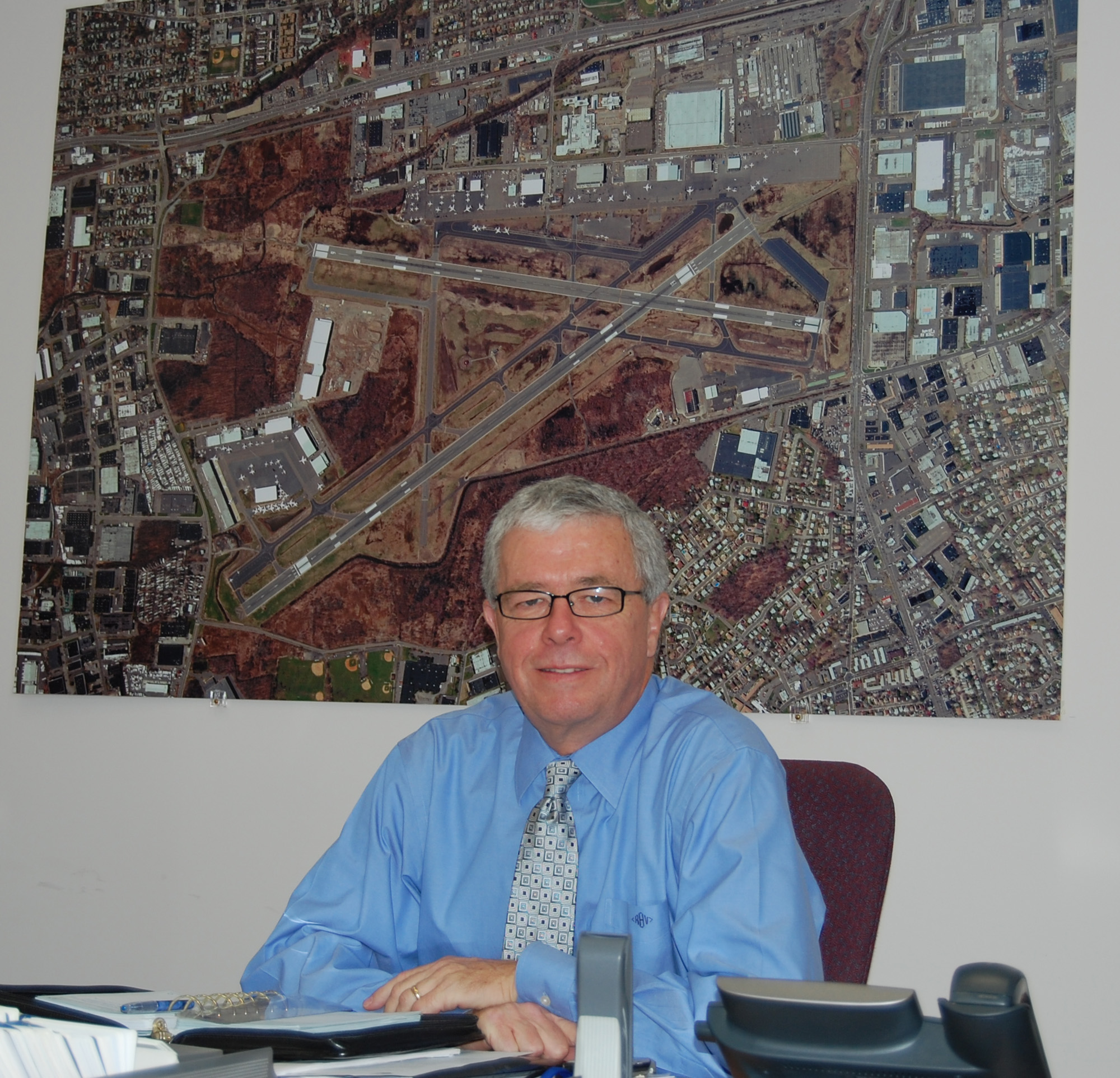
Richard Heslin, the manager at TEB, is looking forward to dealing with the challenges faced at the airport. Safety and noise rank high on his list.
By Henry M. Holden
Richard Heslin’s first six months as the airport manager of Teterboro Airport (TEB) have been challenging. Appointed on July 23 to replace Lanny Rider, the retiring manager, Heslin has oversight over the oldest operating airport in the New York and New Jersey metropolitan area.
TEB is 18.5 miles from Newark Liberty International Airport (EWR) and is located in Bergen County, N.J. Teterboro is one of the largest general aviation airports in the country, providing access to New York City and its financial centers. As a general reliever airport, it handles charter flights, private aircraft, humanitarian and emergency flights and small cargo shipments. The close proximity of the airport to its neighbors presents a set of complex challenges, among them airport safety, security and noise.
Heslin, a “lifelong Bergen County resident,” said he came to aviation late in life.
“I went to school to be a structural engineer and was hired by the Port Authority subsidiary, the Port Authority Trans-Hudson Corporation,” he said. PATH is a rapid transit line between Newark and points in New Jersey to Lower Manhattan.
Heslin worked at PATH for more than 28 years. He was involved in infrastructure maintenance and developmental projects.
“I came over to the aviation department in 1999, at Newark Liberty,” said Heslin. “I was the assistant manager of the airport facilities division, which is responsible for the maintenance of the infrastructure, runways and buildings that the Port Authority owned and operated.”
Heslin said, coincidentally, that was also when the Port Authority was taking over the responsibility for Teterboro Airport.

The small gray patch on the end of Runway 24, towards the right in the middle of the photo, is the EMAS installed since a 2005 accident. Runway 1, on the lower left, is about to have one installed, since two local roads come together at right angles.
“I became intimately involved in developing the capital plan for Teterboro as well,” he said. “I was new to the aviation side, and didn’t really have any background in it, but you learn fast. I eventually became the manager of the airport facilities division at Newark, and I became responsible for both the infrastructure and the safety of the facility. All tenant construction also went through me, so I was the building code official. I also performed those functions for Teterboro.”
The Port Authority owns the basic infrastructure and some facilities, but the fixed base operators and tenants at Teterboro own most of the facilities. Any proposed construction goes through the Port Authority for building code review and not through the local towns.
“Since I was the building code official for tenant construction here at Teterboro, I already knew the tenants and their construction issues,” said Heslin. “I also knew, to a certain extent, the major players. Since our capital plan meant certain improvements to the surrounding communities, I was also familiar with the local officials and the community’s issues.”
Until his former position was filled in October, Heslin had been shuttling back and forth between Newark and Teterboro for almost three months.
“October 15 was my first full day here at TEB,” he said. “I’m looking forward to this assignment.”
Community concerns
Heslin’s challenges stem from several accidents in 2004 and 2005, and other longstanding concerns, such as noise.
“Community concerns fall into three general areas: environmental, which includes noise and general environmental issues; safety; and security, which I think everybody in the aviation industry is sensitive to, particularly since 9/11,” he said. “Those are joint issues, and we’re taking steps to address them.”
He said they looked at the runway safety areas at the end of each runway and decided that a couple really needed attention.
“We recently completed the installation of an engineered material arresting system bed at the north end of runway 6-24,” he said. “In 2005, that’s the area where an aircraft went off the runway, across a busy four-lane highway, and then crashed into a warehouse building.”
Heslin and the airport team are working to install an EMAS bed on the south end of Runway 1-19, an area where two local streets intersect.
“The north end of that runway has 999 feet, which is sufficient for a safety area,” said Heslin. “The south end of Runway 6-24 has plenty of space, so there are no plans now to install an EMAS on those ends of the runways.”
The Teterboro Working Group came together at the request of the Port Authority chairman to address safety and the concerns of the community.

Community encroachment on TEB has forced the closure of Runway 32 (lower middle), shown in this 1960 photo. Today the community is as close to the airport as zoning will permit.
“The group consists of the five fixed base operators,” Heslin said. “Their goal is to make Teterboro Airport a better, safer and quieter neighbor.”
The basic recommendations that came out of the group were eliminating Stage II aircraft, setting a nighttime curfew and a runway weight limitation and improved safety and security.
“The airport community, that is the FBOs the tenants of the airport and the people that use the airport, came together and instituted a safety management system to make it safer,” said Heslin. “The group is reviewing our basic procedures to make sure people are familiar with the airport’s procedures. It’s more of an education and safety reinforcement system. We’re essentially reinforcing existing safety procedures. They’re making sure the people on the ground know what they’re doing with regard to fuel. We also want to make sure the pilots are familiar with the approaches, and the systems that are here.”
Charter traffic remains at about 70 percent, and aircraft movements remain relatively stable, at about 200,000 a year.
“There’s been a slight reduction in the turboprop traffic, a small increase from 76 percent to 78 percent in jet traffic and fewer nighttime operations,” said Heslin. “Some of that may be coincidental. Traffic has changed a little. With more electronic banking, fewer companies are flying cancelled checks at night.”
He said there’s always been a concern about noise, so another recommendation of the working group is that the operators not operate Stage II aircraft into Teterboro.
“The community placed another voluntary restriction on itself,” he said. “As a result, we have 25 percent fewer Stage II aircraft here today than were here last year. It’s decreasing month by month; right now, it constitutes about four percent of our traffic.”
They’re also encouraging people to fly outside the hours of 11 p.m. and 6 a.m.

This photo of TEB, taken around 1927, gives no hint that 80 years later the farmlands would be replaced by residential and industrial structures.
“We have a lot of charter operations and fractionals here,” he said. “This is a significant location for NetJets operations; NetJets has signed on to the recommendations coming out of the Teterboro Working Group. They’ve voluntarily restricted flights between those hours to the extent they can.”
An aircraft receiving three noise violations within a two-year period is banned from using TEB. The airport is only one of a few in the nation to impose this “three strikes” rule.
“One operator flies out of an airport south of us and sometimes comes in late,” Heslin said. “We have our working group visiting with him about the community’s late night noise concerns.”
He said it’s taking a national effort but the message is getting out.
“We’re working through the National Business Aviation Association, the National Air Transportation Association, the General Aviation Manufacturers Association, Aircraft Owners and Pilots Association and other groups,” he said. “We go to their conventions, set up a small booth and spread the word. We’re trying to create a friendlier environment by letting people know what the issues are and asking them to help avoid escalating them.”
While there may always be a focus on some issues, there’s also a synergy between the community and the airport. Ninety-four percent of the airport’s service industry employees live within 15 miles of the airport. The airport helps to support almost 4,000 secondary jobs.
“We’re joined at the hip with the community,” said Heslin. “We have some common issues and goals. I think the community and the airport are on the right track.”











